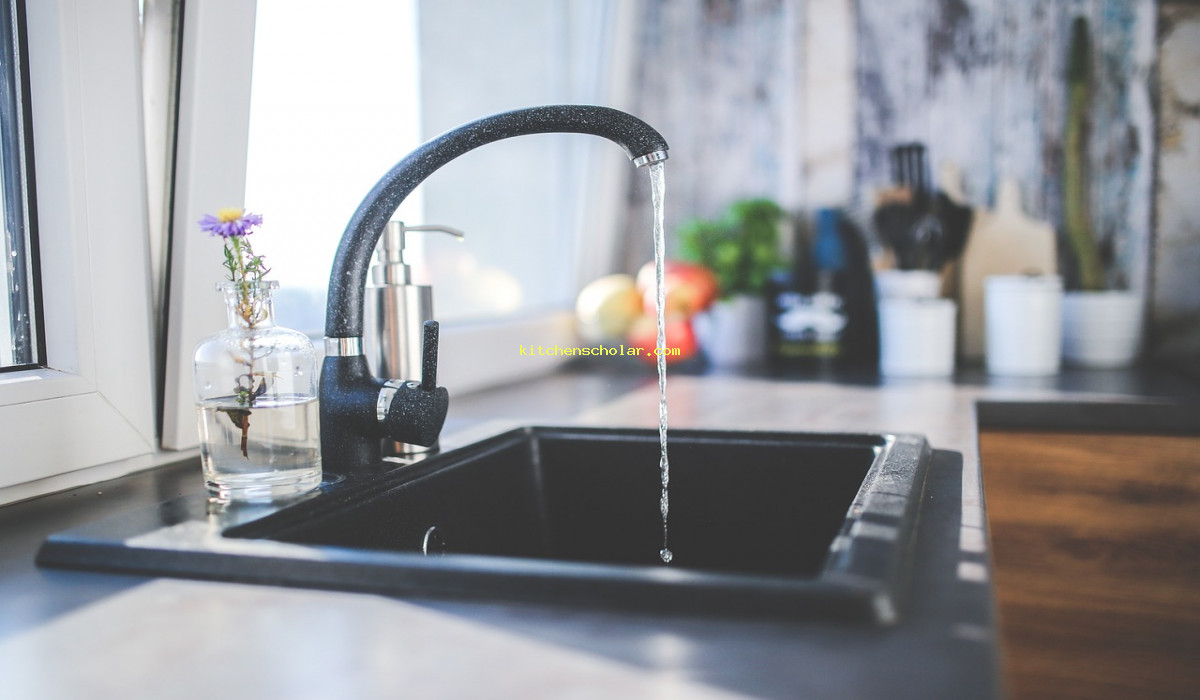10 Expert Tips for a Clean and Efficient Kitchen Exhaust Vent. Looking to improve the air quality in your kitchen? Consider installing a kitchen exhaust vent. Keep your cooking space free of smoke, odors, and harmful pollutants. Follow these guidelines to make the most out of your kitchen exhaust vent. Trust us, your nose will thank you.
Expert Tips for a Clean and Efficient Kitchen
10 Expert Tips for a Clean and Efficient Kitchen Exhaust Vent
10 Expert Tips for a Clean and Efficient Kitchen Exhaust Vent. smoke odors and 10 Expert Tips for a Clean and Efficient Kitchen Exhaust Vent
The Importance of a Kitchen Exhaust Vent
The kitchen is often described as the heart of the home, a place where delicious meals are created and memories are made. However, with all the cooking and preparing of food, the kitchen is also a prime location for the accumulation of heat, smoke, steam, and odors. A well-functioning kitchen exhaust vent is essential to maintain a comfortable and clean kitchen environment. In this blog post, we will delve into the details of the kitchen exhaust vent, its benefits, and how to choose the right one for your kitchen.
The Basics of a Kitchen Exhaust Vent
A kitchen exhaust vent, also known as a range hood or a vent hood, is a ventilation system that removes unwanted smoke, steam, heat, and odors generated during cooking. It is typically installed above the cooking range or cooktop and is connected to a duct system that leads outside. The main purpose of a kitchen exhaust vent is to improve air quality and remove pollutants, making cooking more comfortable and keeping the kitchen clean.
Benefits of a Kitchen Exhaust Vent
A kitchen exhaust vent offers numerous benefits, making it an essential component of any kitchen. Here are some of the primary advantages of having a kitchen exhaust vent installed:
Freshen Up the Air
Cooking can release steam, smoke, and unpleasant odors into the air, which can linger for hours. A kitchen exhaust vent helps to remove these pollutants, keeping the air in your kitchen fresh and clean.
Improve Indoor Air Quality
The kitchen can be a source of indoor air pollution, as cooking can release particles and chemicals such as carbon monoxide, nitrogen dioxide, and formaldehyde. A kitchen exhaust vent helps to remove these pollutants, improving the overall indoor air quality of your home.
Reduce Moisture
Steam and moisture can accumulate in the kitchen during cooking, creating the perfect conditions for mold and mildew growth. A kitchen exhaust vent helps to remove excess moisture, reducing the risk of mold and mildew and keeping your kitchen dry.
Protect Your Home
Excess heat, smoke, and steam can cause damage to your kitchen walls and cabinets over time. A kitchen exhaust vent helps to remove these elements, protecting your home from potential damage.
Enhance Cooking Experience
A well-ventilated kitchen is a more comfortable space to cook in. With a kitchen exhaust vent, you can say goodbye to hot and stuffy kitchens and enjoy a more pleasant cooking experience.
Types of Kitchen Exhaust Vents
When it comes to choosing a kitchen exhaust vent, there are several different options to consider. Here are the different types of kitchen exhaust vents available:
Under-Cabinet Range Hood
This type of kitchen exhaust vent is installed underneath a cabinet above your cooking range. It is compact and effective, making it a popular choice for many kitchens.
Wall-Mounted Range Hood
A wall-mounted range hood is installed directly to the wall, above the cooking range. It is often larger than an under-cabinet range hood and offers more powerful ventilation.
Island Range Hood
For kitchens with a cooktop placed on an island, an island range hood is the ideal choice. It hangs from the ceiling and provides ventilation over the island cooktop.
Downdraft Range Hood
Unlike other range hoods, a downdraft range hood is installed directly behind the cooking range and pulls air downwards, into the floor. It is a good option for kitchens with limited space.
Customizable Range Hood
If you have specific design preferences, a customizable range hood may be the best choice for you. You can choose the size, style, and features to match your kitchen perfectly.

Factors to Consider When Choosing a Kitchen Exhaust Vent
With so many options available, choosing the right kitchen exhaust vent for your kitchen can be overwhelming. Here are some factors to consider when making your decision:
Cooking Frequency and Style
The amount and type of cooking you do will determine the strength of the kitchen exhaust vent you need. If you cook frequently or do a lot of high-heat cooking, you will need a more powerful range hood.
Kitchen Size
The size of your kitchen will also play a role in choosing the right kitchen exhaust vent. A smaller kitchen may only require a basic under-cabinet range hood, while a larger kitchen may need a more powerful island or wall-mounted range hood.
Design and Style
Your kitchen exhaust vent should not only be functional but also fit seamlessly into your kitchen design. Consider the style and color of your kitchen when choosing a range hood.
Budget
Like any home improvement project, budget should always be considered when choosing a kitchen exhaust vent. Range hoods vary in price, so it’s essential to determine how much you are willing to spend before making a decision.
Proper Maintenance for Your Kitchen Exhaust Vent
To ensure that your kitchen exhaust vent continues to function properly, regular maintenance is necessary. Here are some tips for maintaining your kitchen exhaust vent:
Clean or Replace Filters
The filters in your kitchen exhaust vent can become clogged with grease and debris over time. It is essential to clean or replace them regularly to ensure proper ventilation.
Clean the Vent and Ducts
The exterior vent and ductwork of your kitchen exhaust vent can also gather dust and grease, reducing its effectiveness. Regularly cleaning them will keep your range hood functioning at its best.
Check for Air Leaks
Leaks in the ductwork of your kitchen exhaust vent can reduce its efficiency. Periodically check for any potential leaks and have them repaired promptly.
Inspect for Damage
Regularly inspect your range hood for any damage, such as cracks or loose parts. Addressing these issues promptly will help prolong the lifespan of your kitchen exhaust vent.
Follow Manufacturer Recommendations
Always refer to the manufacturer’s instructions for proper maintenance and care of your specific kitchen exhaust vent model.
10 Expert Tips for a Clean and Efficient Kitchen Exhaust Vent
Looking to improve the air quality in your kitchen? Consider installing a kitchen exhaust vent. Keep your cooking space free of smoke, odors, and harmful pollutants. Follow these guidelines to make the most out of your kitchen exhaust vent. Trust us, your nose will thank you.. Kitchen 10 Expert Tips for a Clean and Efficient Kitchen Exhaust Vent
Kitchen Exhaust Vent: Keep Your Kitchen Clean and Safe
A kitchen exhaust vent is an essential component of any kitchenExpert Tips for a Clean and Efficient Kitchen . It removes smoke, steam, and other cooking odors from your kitchen, ensuring a clean and safe cooking environment. While it may seem like a simple elementExpert Tips for a Clean and Efficient Kitchen , understanding its importance and maintaining it properly is crucial for the health and functionality of your kitchen.
In this article, we will explore the ins and outs of kitchen exhaust ventsExpert Tips for a Clean and Efficient Kitchen , from their purpose and benefits to their installation and maintenance. So, if you want to keep your kitchen clean and safe, keep reading!
Purpose of Kitchen Exhaust Vents
A kitchen exhaust vent, also known as a range hoodExpert Tips for a Clean and Efficient Kitchen , is a device installed above your kitchen stove or cooktop. Its primary purpose is to extract air and fumes produced during cooking and expel them outside, ensuring good air quality in your kitchen. Without proper ventilation, these fumes can quickly spread throughout your home, causing unpleasant odors and even health hazards.
Benefits of Kitchen Exhaust Vents
A kitchen exhaust vent offers several benefits that go beyond removing odors and improving air quality. Here are some of the key advantages of having a functioning kitchen exhaust vent:
- – Improved cooking experience: Cooking often produces smoke, steam, and strong odors, which can make the kitchen uncomfortable and hazardous. A kitchen exhaust vent removes these elements, making your cooking experience more enjoyable and convenient.
- – Better air quality: With a kitchen exhaust vent, pollutants and other harmful substances produced during cooking are eliminated, ensuring a healthier indoor environment. This is especially important for people with respiratory problems and allergies.
- – Protection for your kitchen: Fumes from cooking can cause discoloration, corrosion, and other damages to your kitchen walls, cabinets, and appliances. A functioning kitchen exhaust vent prevents these issues, extending the life of your kitchen.
- – Increased energy efficiency: Cooking without proper ventilation results in higher temperatures, forcing your air conditioner to work harder. By removing hot air from your kitchen, a kitchen exhaust vent helps reduce your energy consumption and utility bills.
Installation of a Kitchen Exhaust Vent
Installing a kitchen exhaust vent requires specific knowledge and skills, so it is best to hire a professional for the job. Here are the general steps involved in installing a kitchen exhaust vent:
1. Choose the Right Ventilation Type: There are two types of kitchen exhaust vents – ducted and ductless. Ducted vents expel air outside through a ventilation duct, while ductless vents use filters to purify the air and recirculate it back into the kitchen. Ducted vents are more effective in removing pollutants, but they also require more complex installation.
2. Measure and Prepare the Area: Before installation, you must measure the space above your stove and ensure there is enough room for the vent. You will also need to clear the area of any obstructions to ensure safe and efficient operation.
3. Install the Hood: The hood is the main component of a kitchen exhaust vent. It should be mounted at least 30 inches above your cooktop and secured with bolts and screws. The vent’s power source should also be taken into consideration during installation.
4. Connect the Hood to the Duct: If you are installing a ducted vent, you will need to connect the hood to the ventilation duct using a duct pipe. This step requires precise measurements and sealing to ensure the vent functions properly.
5. Install the Filter (For Ductless Vents): If you are installing a ductless vent, you must install the filter according to the manufacturer’s instructions. These filters need to be regularly cleaned or replaced to maintain the vent’s effectiveness.
6. Test the Ventilation: After installation, make sure to test the vent to ensure proper operation. This includes turning on the fan and checking for any air leaks or abnormal noises.
Maintenance of a Kitchen Exhaust Vent
Regular maintenance is crucial for the proper functioning of your kitchen exhaust vent. Neglecting maintenance can result in reduced efficiency and could even lead to fire hazards. Here are some essential maintenance tasks to keep your kitchen vent in optimal condition:
- – Clean or Replace the Filter: As mentioned earlier, the filters in a ductless vent need to be regularly cleaned or replaced to maintain proper air purification.
- – Clear the Hood and Duct: Over time, grease and other debris can accumulate in the hood and duct, clogging the ventilation system. It is critical to regularly clean and clear these areas to prevent any blockages.
- – Check the Fan Motor: The fan motor is responsible for the movement of air within the vent. It is essential to check the motor regularly for any signs of wear and tear and replace it if necessary.
- – Professional Inspection: It is recommended to have a professional inspect and service your kitchen exhaust vent at least once a year. This ensures any underlying issues are identified and addressed before they become more significant problems.

Conclusion
A kitchen exhaust vent is an essential component of any kitchenExpert Tips for a Clean and Efficient Kitchen . It ensures good air quality, protects your kitchen from damage, and improves your overall cooking experience. If you have not installed a kitchen exhaust vent in your kitchen, now is the time to do so! And if you already have oneExpert Tips for a Clean and Efficient Kitchen , make sure to maintain it regularly to reap all the benefits it has to offer.
So, don’t wait any longer – get your kitchen exhaust vent installed or serviced today and keep your kitchen clean and safe for years to come.
Kitchen Exhaust Vent Installation: Step-by-Step Guide
Installing a kitchen exhaust vent is a vital aspect of keeping your kitchen clean and safe. Here, we will provide a detailed guide on how to install a kitchen exhaust vent in your home.
1. Choose the Right Type of Ventilation
The first step to installing a kitchen exhaust vent is to choose the right type of ventilation for your needs. As mentioned earlier, there are two types – ducted and ductless. Ducted vents require more complex installation but are more effective in removing pollutants, while ductless vents are easier to install but not as efficient. Take into consideration your kitchen’s layout and your budget when deciding which type to choose.
2. Measure and Prepare the Area
Before installationExpert Tips for a Clean and Efficient Kitchen , you must measure the area above your stove to ensure there is enough space for the vent. You should also clear the area of any obstructions that could impede the installation or operation of the vent.
3. Install the Hood
The hood is the main component of a kitchen exhaust ventExpert Tips for a Clean and Efficient Kitchen . It should be mounted at least 30 inches above your cooking surface and secured with bolts and screwsExpert Tips for a Clean and Efficient Kitchen . Make sure the vent’s power source is within reach before installing the hood.
4. Connect the Hood to the Duct
If you are installing a ducted vent, the next step is to connect the hood to the ventilation duct using a duct pipe. This requires precise measurements and proper sealing to ensure the vent functions correctly.
5. Install the Filter (For Ductless Vents)
If you are installing a ductless vent, you will need to install the filter as per the manufacturer’s instructions. Remember to regularly clean or replace the filter to maintain proper air purification.
6. Test the Ventilation
After installation, it is essential to test the vent to make sure it is working correctly. This includes turning on the fan and checking for any air leaks or abnormal noisesExpert Tips for a Clean and Efficient Kitchen . If you notice any issues, make sure to address them before using the vent regularly.
Maintaining Your Kitchen Exhaust Vent: Tips and Tricks
Regular maintenance is crucial for the proper functioning of your kitchen exhaust vent. Here are some essential tips and tricks to keep your vent in optimal condition.
1. Clean or Replace the Filter Regularly
The filters in a ductless vent need frequent cleaning or replacing to maintain proper air purificationExpert Tips for a Clean and Efficient Kitchen . Make sure to follow the manufacturer’s instructions for the appropriate cleaning and replacement intervalsExpert Tips for a Clean and Efficient Kitchen .
2. Clear the Hood and Duct Regularly
Grease and debris can accumulate in the hood and ductExpert Tips for a Clean and Efficient Kitchen , clogging the ventilation system over time. Regularly cleaning and clearing these areas will prevent any blockages and ensure the proper functioning of the vent.
3. Check the Fan Motor
The fan motor in your kitchen exhaust vent is responsible for moving air within the systemExpert Tips for a Clean and Efficient Kitchen . It is essential to regularly check the motor for any signs of wear and tear and replace it if necessaryExpert Tips for a Clean and Efficient Kitchen .
4. Schedule a Professional Inspection
To ensure your kitchen exhaust vent is functioning at its best, it is recommended to have it inspected and serviced by a professional at least once a year. This will catch any underlying issues before they turn into more significant problems.
In Summary
A kitchen exhaust vent is a crucial and often overlooked component of any kitchen. By installing one in your home and properly maintaining itExpert Tips for a Clean and Efficient Kitchen , you can ensure a clean and safe cooking environment that will last for years to come. So, don’t wait – take the necessary steps to install or service your kitchen exhaust vent today! 10 Expert Tips for a Clean and Efficient Kitchen Exhaust Vent

10 Expert Tips for a Clean and Efficient Kitchen Exhaust Vent
How often should you clean your kitchen exhaust vent?
Cleaning your kitchen exhaust vent should be done at least once a year. Expert Tips for a Clean and Efficient Kitchen , if you do a lot of cooking, it is recommended to clean it every 6 months.
How does a kitchen exhaust vent work?
Kitchen exhaust vents work by pulling in the air from your kitchen and filtering it through a vent hood. The hood then directs the air outsideExpert Tips for a Clean and Efficient Kitchen , removing any smoke, Expert Tips for a Clean and Efficient Kitchen , and grease.
Can I install a kitchen exhaust vent myself?
It is not recommended to install a kitchen exhaust vent yourself unless you have experience and knowledge in construction and electrical workExpert Tips for a Clean and Efficient Kitchen . It is best to hire a professional to ensure safety and proper installation.
Why is my kitchen exhaust vent fan not working?
There can be a few reasons why your kitchen exhaust vent fan is not workingExpert Tips for a Clean and Efficient Kitchen . It could be a tripped circuit breakerExpert Tips for a Clean and Efficient Kitchen , a damaged fan motor, or a clogged vent. It is best to consult a professional to diagnose and fix the issue.
What is the purpose of a range hood for a kitchen exhaust vent?
A range hood for a kitchen exhaust vent helps to remove smoke, Expert Tips for a Clean and Efficient Kitchen , and odors from your kitchen while cooking. It also helps to keep your kitchen cleaner by removing grease and other particles from the air.
Do I need a permit to install a kitchen exhaust vent?
The need for a permit to install a kitchen exhaust vent varies depending on your location. It is best to check with your city or town’s building department to determine if a permit is requiredExpert Tips for a Clean and Efficient Kitchen .
How can I tell if my kitchen exhaust vent is clogged?
Some signs that your kitchen exhaust vent may be clogged include a decrease in performanceExpert Tips for a Clean and Efficient Kitchen , an increase in cooking smells, and visible grease build-up. It is recommended to have a professional inspect and clean your vent if clogging is suspected.
How do I maintain my kitchen exhaust vent?
Regular maintenance of your kitchen exhaust vent includes cleaning the filters, wiping down the range hood, and checking for any clogs. It is also recommended to have a professional service and clean your vent at least once a year.
Can I vent my kitchen exhaust through the roof?
Yes, it is possible to vent your kitchen exhaust through the roof. However, this may require more installation work and can be more costly than venting through a wall. It is important to consult with a professional before making any changes to your ventilation system.
Why does my kitchen exhaust vent make so much noise?
Loud noises coming from your kitchen exhaust vent could be a result of a clogged vent, damaged fan motor, or an improper installation. It is best to have a professional inspect and address the issue to prevent further damage. 10 Expert Tips for a Clean and Efficient Kitchen Exhaust Vent
